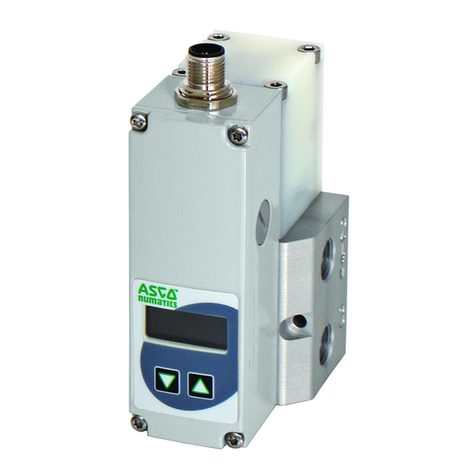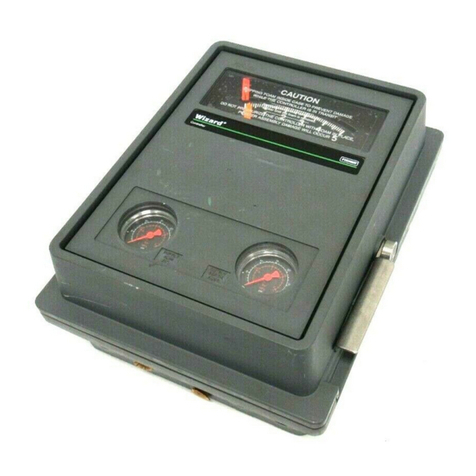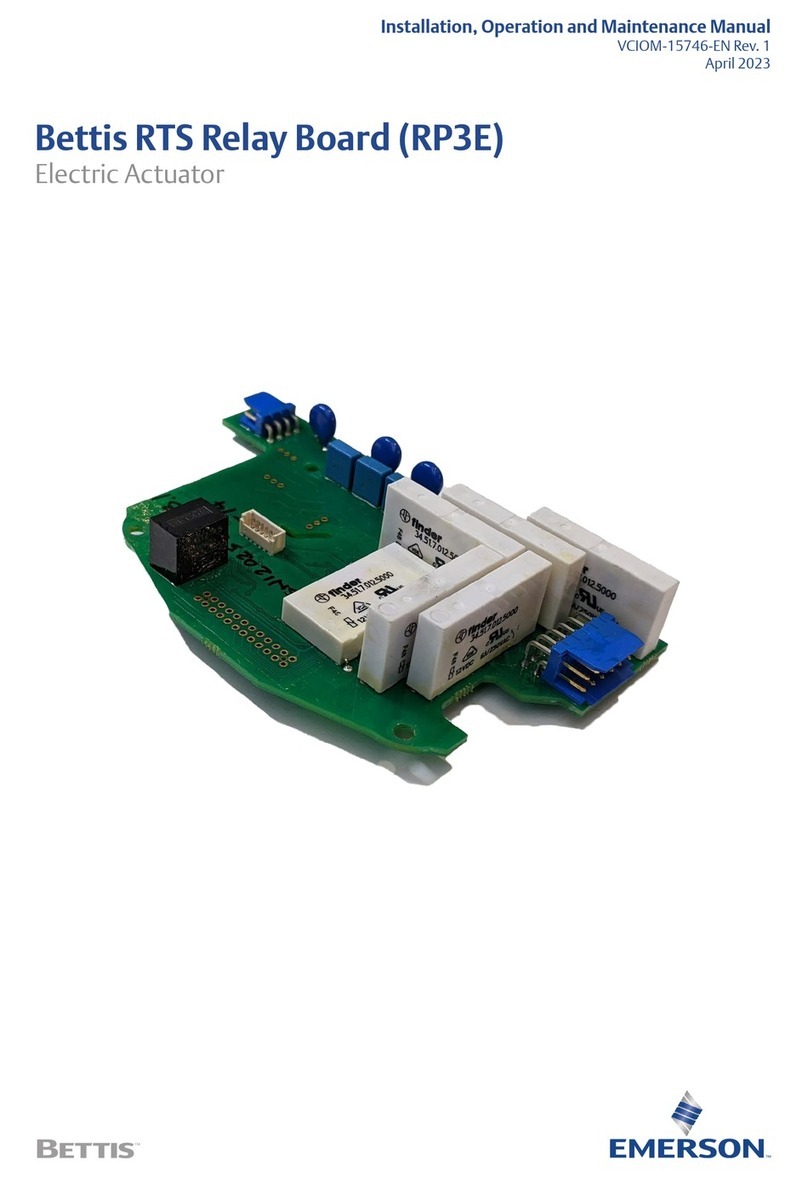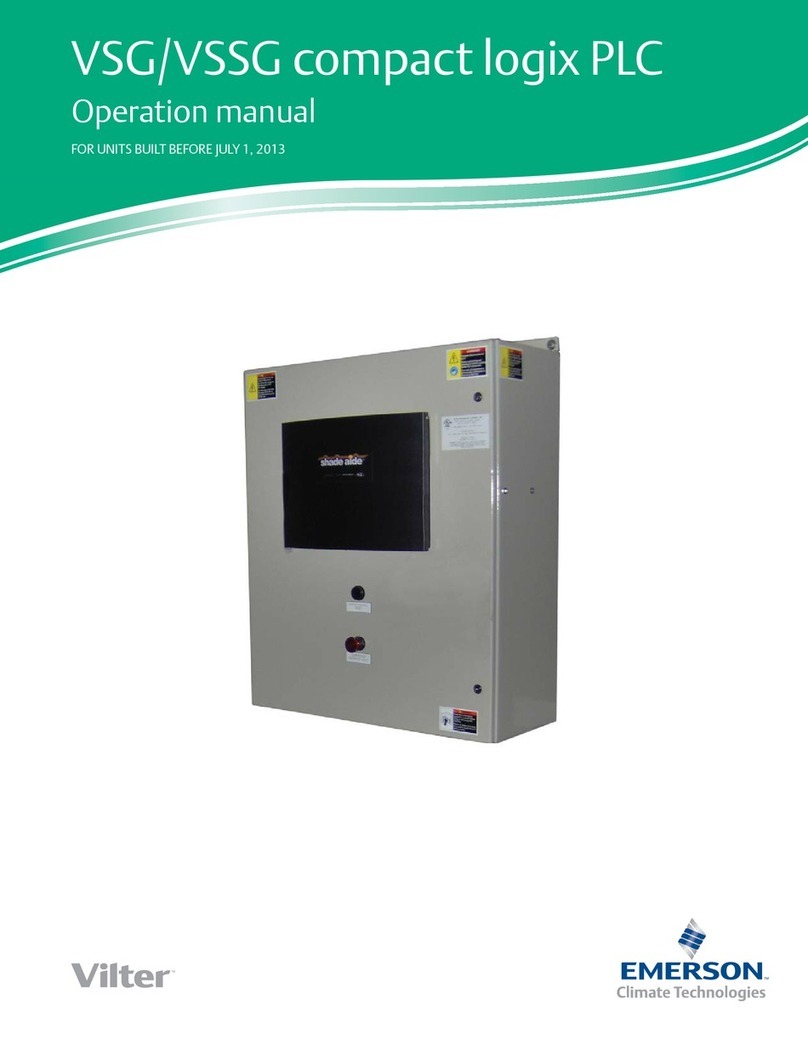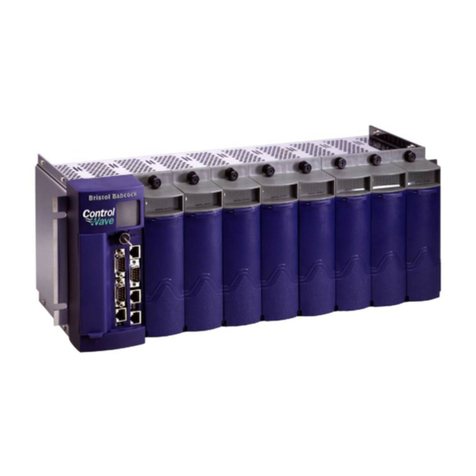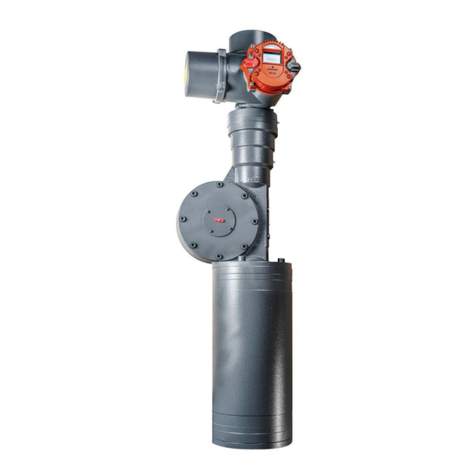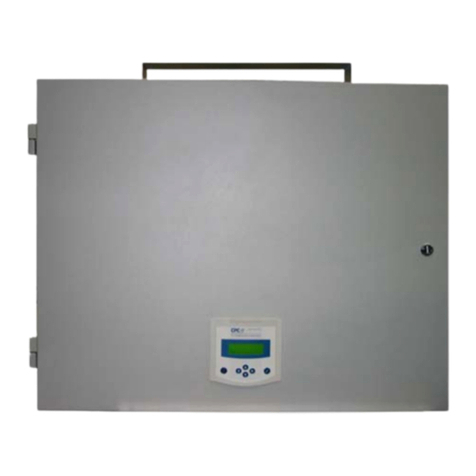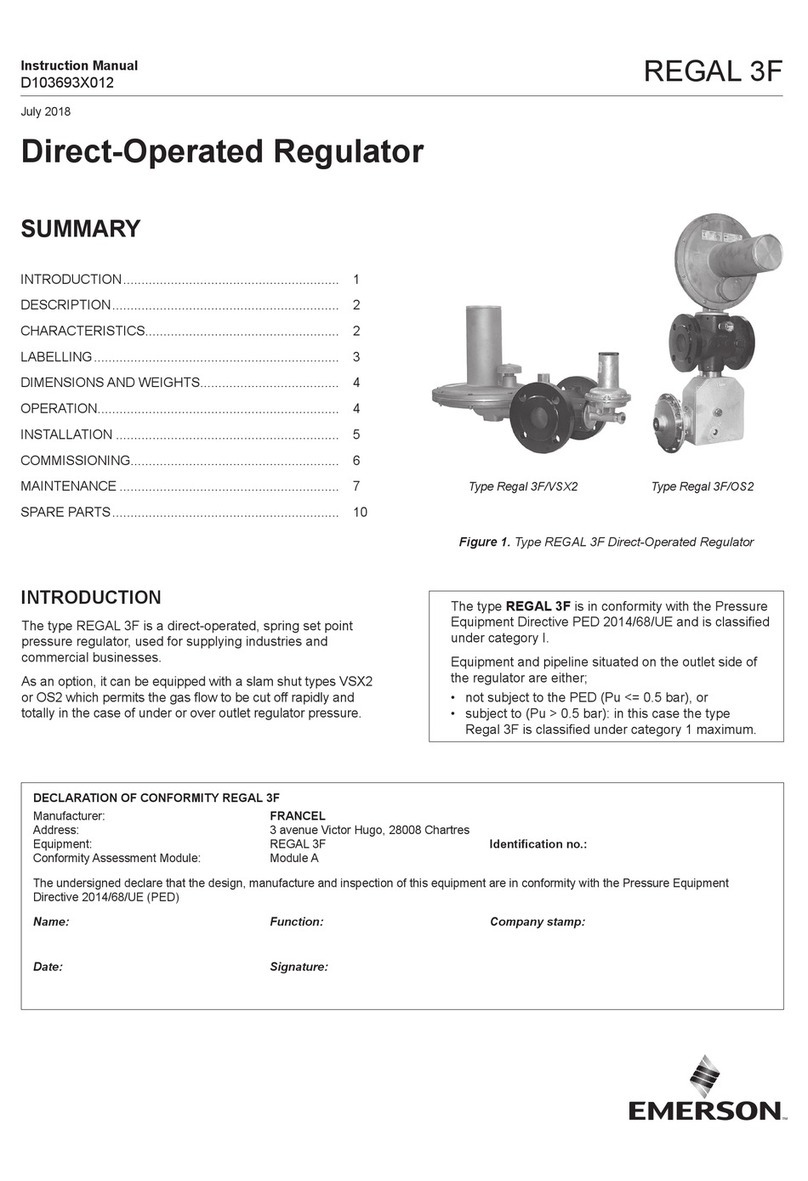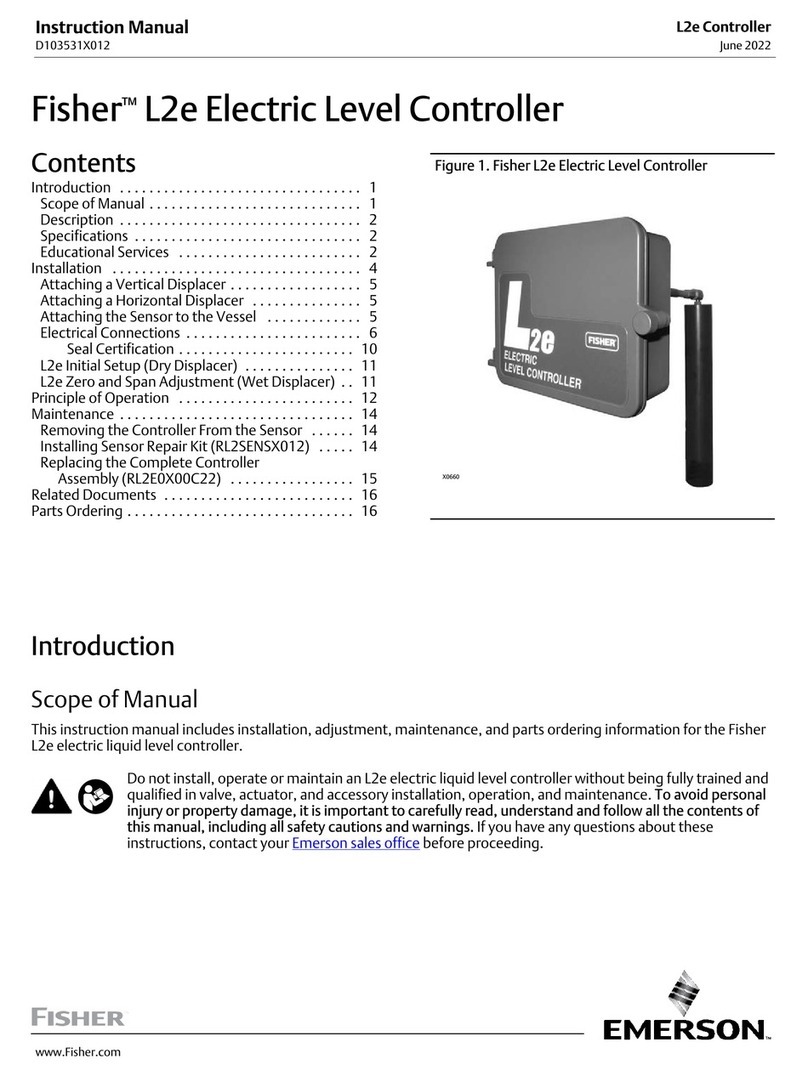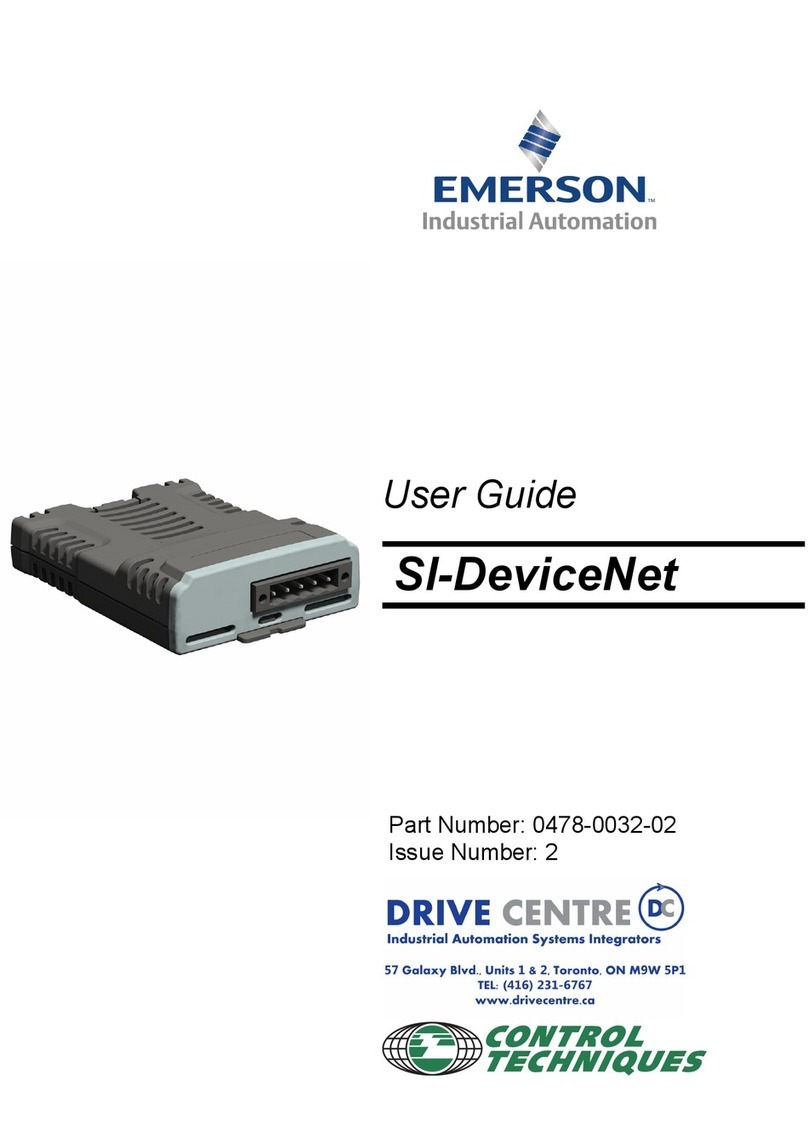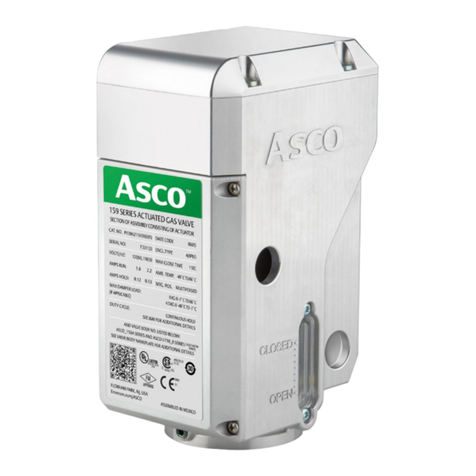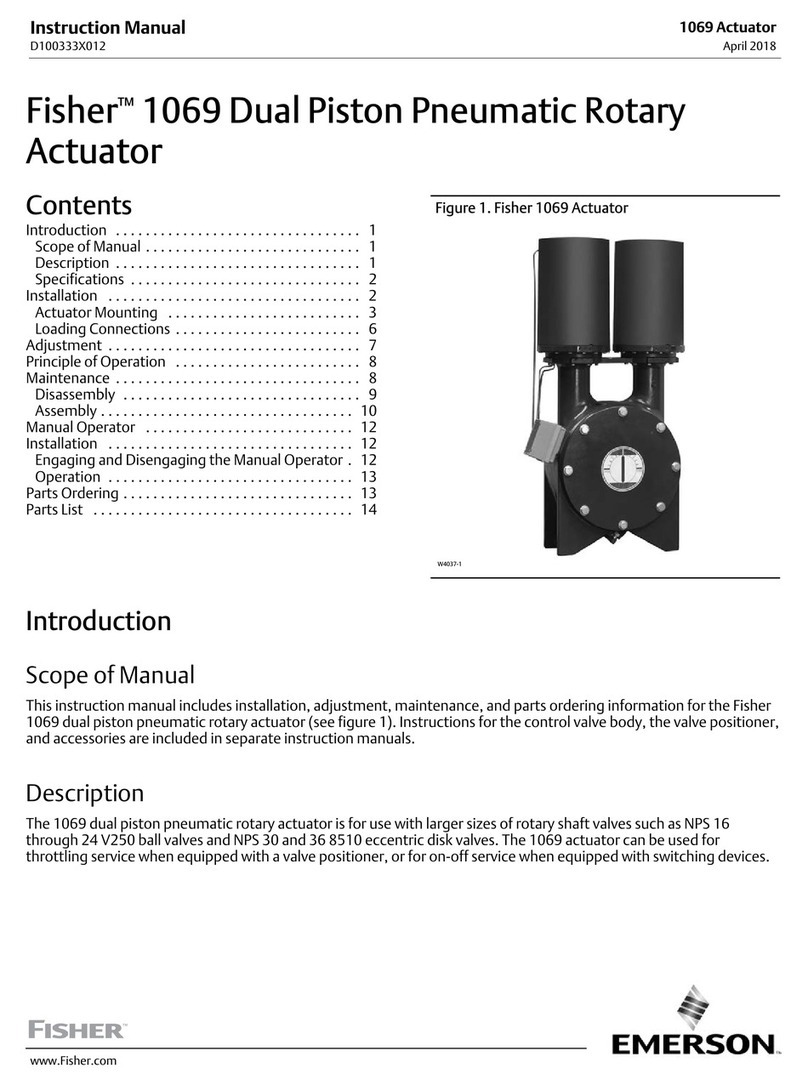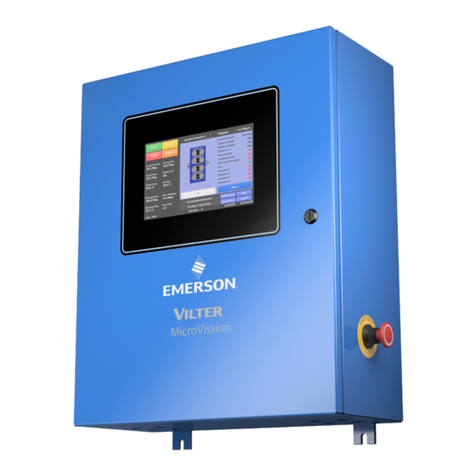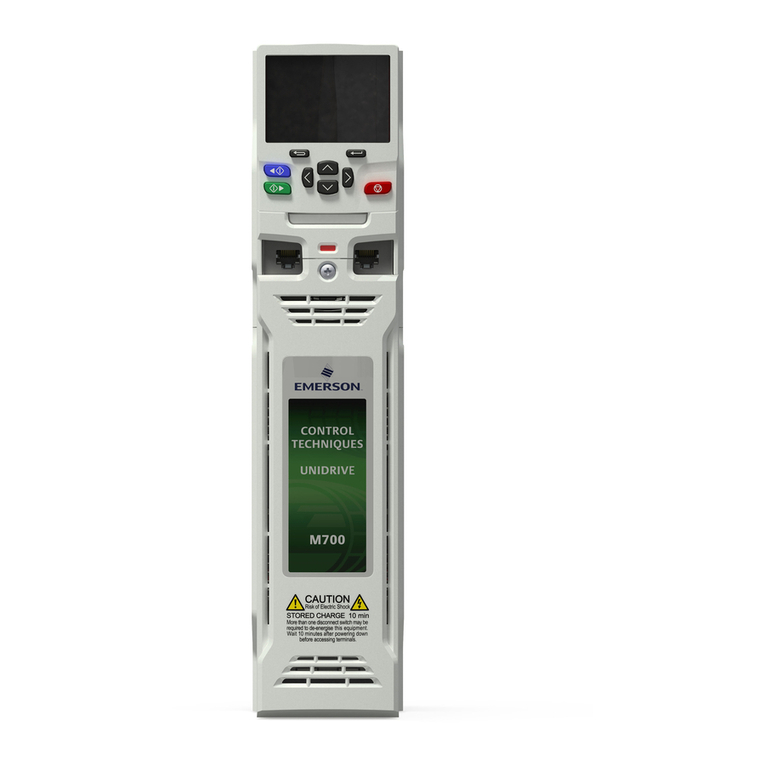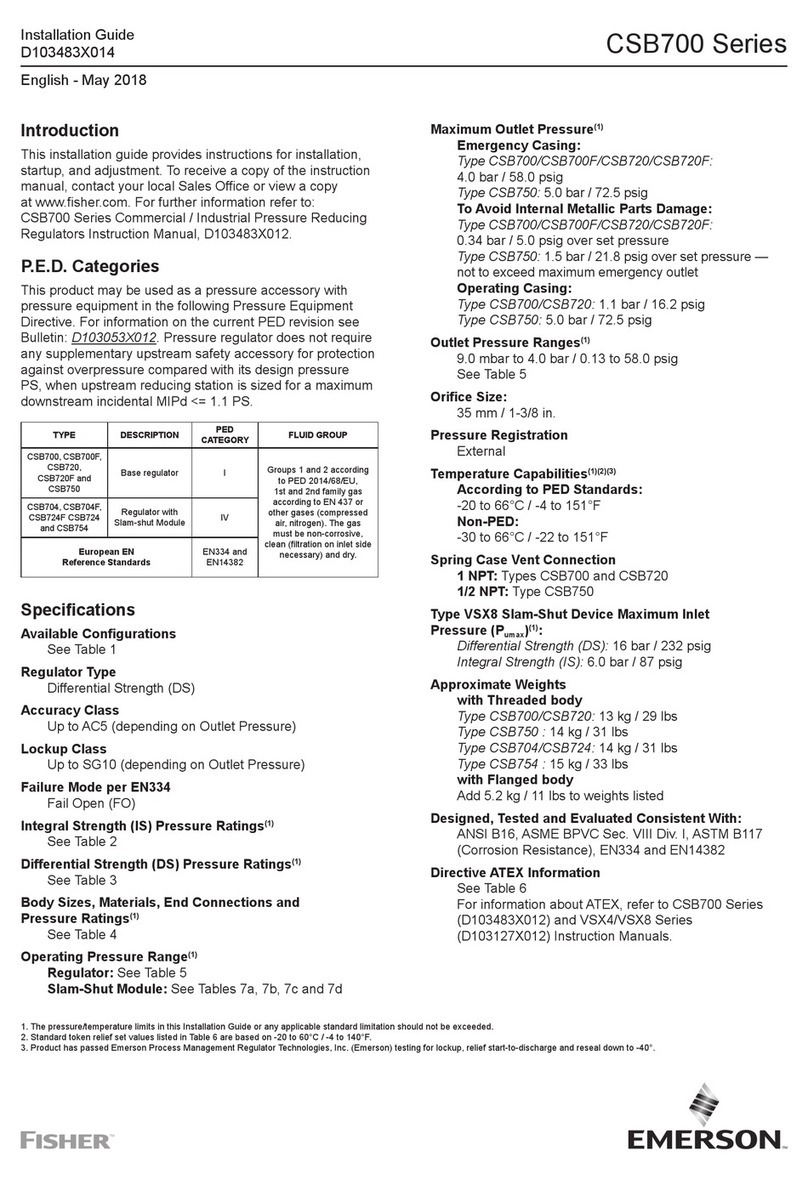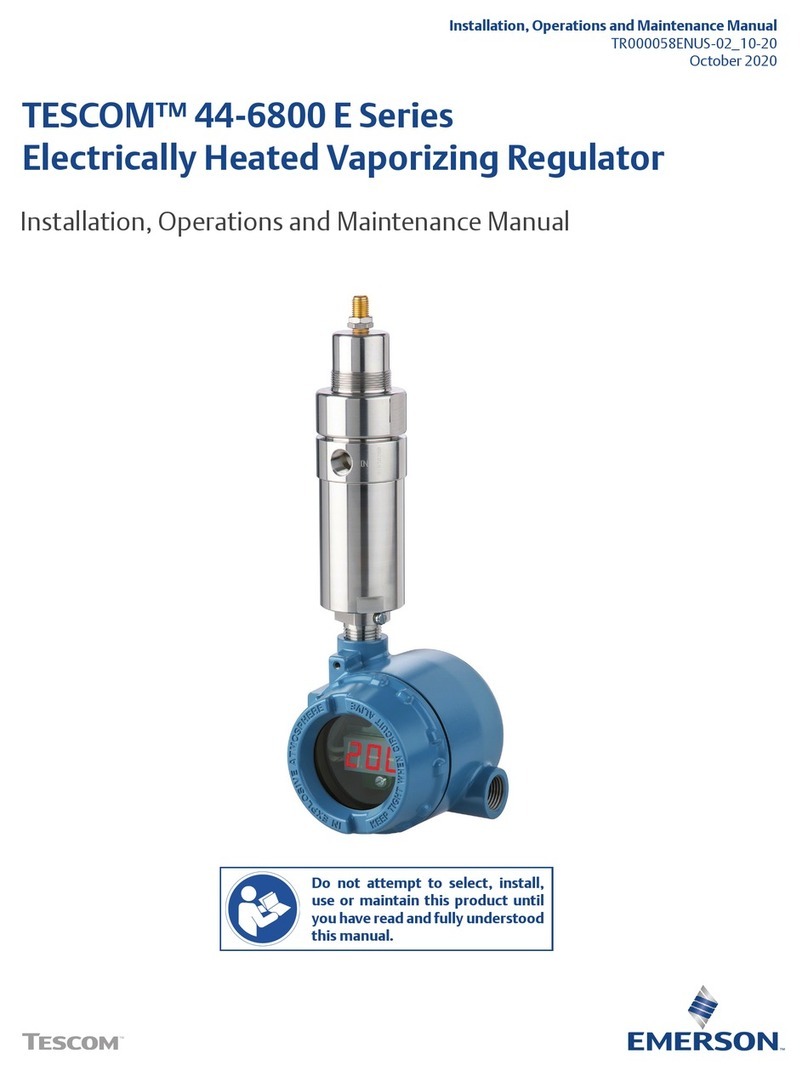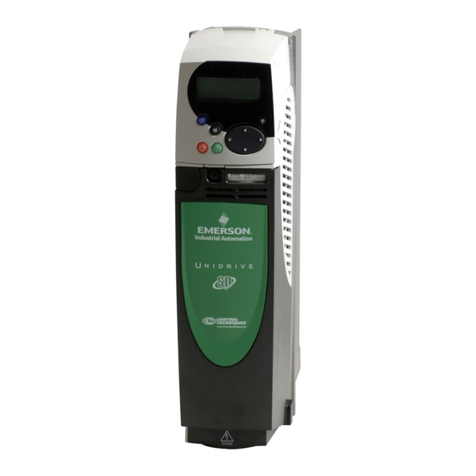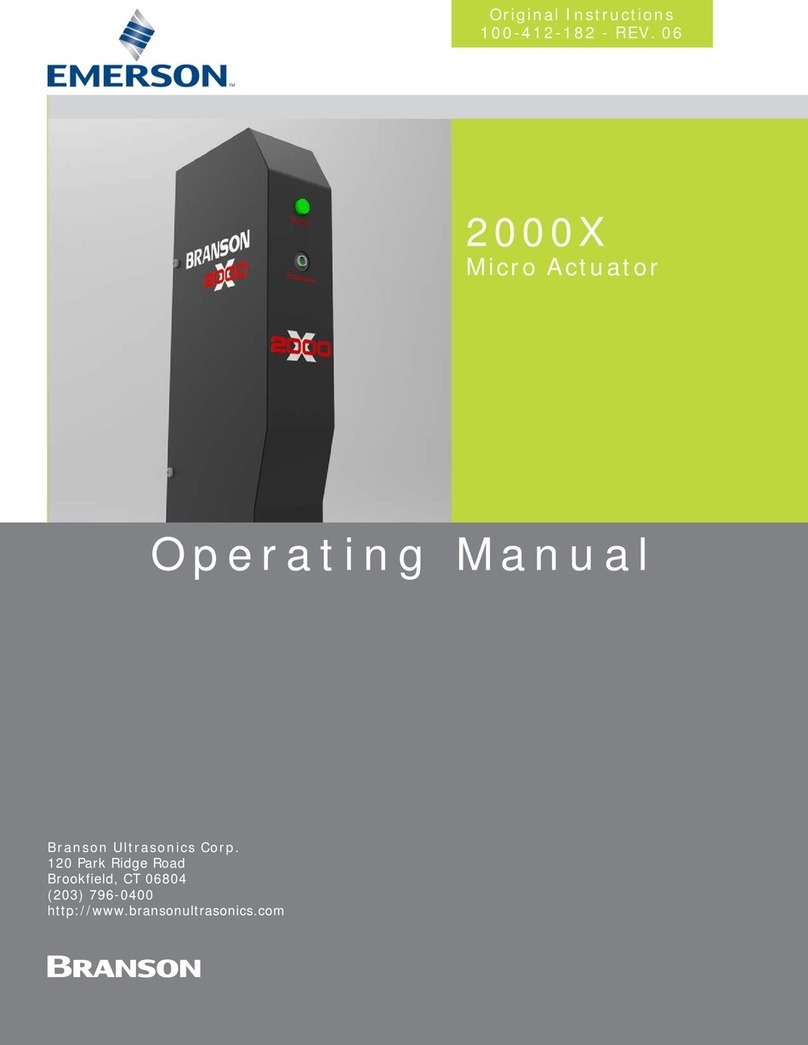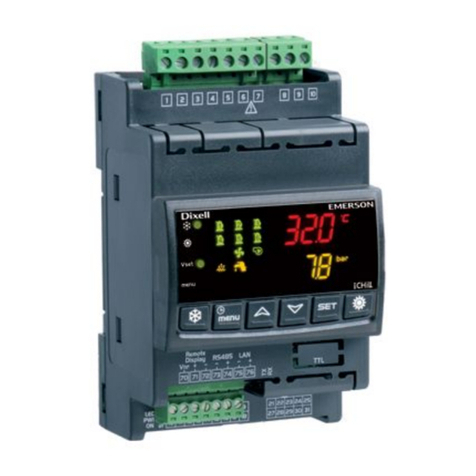1592020040 XR40CX GB m&M r1.1 22.06.2012 XR40CX 2/4
1. Enter the Programming mode by pressing the Set + nkeys for 3s (the “°C” or “°F” LED starts
blinking).
2. Select the required parameter. Press the “SET” key to display its value
3. Use “UP” or “DOWN” to change its value.
4. Press “SET”to store the new value and move to the following parameter.
To exit: Press SET + UP or wait 15swithout pressing a key.
NOTE: the set value is stored even when the procedure is exited by waiting the time-out to expire.
6.5 THE HIDDEN MENU
The hidden menu Includes all the parameters of the instrument.
6.5.1 HOW TO ENTER THE HIDDEN MENU
1. Enter the Programming mode by pressing the Set + nkeys for 3s (the “°C” or “°F” LED starts
blinking).
2. Released the keys, then push again the Set+nkeys for more than 7s. The Pr2 label will be
displayed immediatelyfollowed from the HY parameter.
NOW YOU ARE IN THE HIDDEN MENU.
3. Select the required parameter.
4. Press the “SET” key to displayits value
5. Use o or nto change its value.
6. Press “SET”to store the new value and move to the following parameter.
To exit: Press SET + o or wait 15swithout pressing a key.
NOTE1: if none parameter is present in Pr1, after 3s the “noP” message is displayed. Keep the keys
pushed tillthe Pr2 message is displayed.
NOTE2: the set value is stored even when the procedure is exited by waiting the time-out to expire.
6.5.2 HOW TO MOVE A PARAMETER FROM THE HIDDEN MENU TO THE
FIRST LEVEL AND VICEVERSA.
Each parameter present in the HIDDEN MENU can be removed or put into “THE FIRST LEVEL” (user
level) by pressing “SET + n”.
In HIDDEN MENU when a parameter is present in First Levelthe decimalpoint is on.
6.6 HOW TO LOCK THE KEYBOARD
1. Keep pressed for more than 3 s the UP + DOWN keys.
2. The “POF” message will be displayed and the keyboard will be locked. At this point it will be
possible only to see the set point or the MAX o Min temperature stored
3. If a key is pressed more than 3s the “POF” message willbe displayed.
6.7 TO UNLOCK THE KEYBOARD
Keep pressed together for more than 3s the o and nkeys, till the “Pon” message will be
displayed.
6.8 THE CONTINUOUS CYCLE
When defrost is not in progress, it can be activated by holding the “o” key pressed for about 3
seconds. The compressor operates to maintain the “ccS” set point for the time set through the “CCt”
parameter. The cycle can be terminated before the end of the set time using the same activationkey
“o”for 3 seconds.
6.9 THE ON/OFF FUNCTION
With “onF = oFF”, pushing the ON/OFF key, the instrument is switched off. The “OFF”
message is displayed. In this configuration, the regulation is disabled.
To switch the instrument on, push again the ON/OFF key.
WARNING: Loads connected to the normally closed contacts of the relays are always
supplied and under voltage, even if the instrument is in stand by mode.
7. PARAMETERS
REGULATION
Hy Differential: (0,1 ÷ 25,5°C / 1÷255°F) Intervention differentialfor set point. Compressor Cut IN is
Set Point + differential (Hy). Compressor Cut OUT is when the temperature reaches the set
point.
LS Minimum set point: (- 50°C÷SET/-58°F÷SET): Sets the minimum value for the set point.
US Maximum set point: (SET÷110°C/ SET÷230°F). Set the maximum valuefor set point.
Ot Thermostat probe calibration: (-12.0÷12.0°C; -120÷120°F) allows to adjust possible offset of
the thermostat probe.
P2P Evaporator probe presence: n= not present: the defrost stopsbytime; y= present: the defrost
stops by temperature.
OE Evaporator probe calibration: (-12.0÷12.0°C; -120÷120°F). allows to adjust possible offset of
the evaporator probe.
P3P Third probe presence (P3): n= not present:, the terminal operates as digital input.; y=
present:, the terminaloperates as third probe.
O3 Third probe calibration (P3): (-12.0÷12.0°C; -120÷120°F). allows to adjust possible offset of
the third probe.
P4P Fourth probe presence: (n = Not present; y= present).
o4 Fourth probe calibration: (-12.012.0°C) allows to adjust possible offset of the fourth probe.
OdS Outputs activation delay at start up: (0÷255min) This function is enabled at the initial start up
of the instrument and inhibits anyoutput activation for the period of time set in the parameter.
AC Anti-short cycle delay: (0÷50 min) minimum interval between the compressor stop and the
following restart.
rtr Percentage of the second and first probe for regulation (0÷100; 100 = P1, 0 = P2 ): it
allows to set the regulation according to the percentage of the first and second probe, as for the
following formula (rtr(P1-P2)/100 + P2).
CCt Compressor ON time during continuous cycle: (0.0÷24.0h; res. 10min) Allows to set the
length of the continuous cycle: compressor stays on without interruption for the CCt time. Can be
used, for instance, when the room is filled with new products.
CCS Set point for continuous cycle: (-50÷150°C) it sets the set point used during the continuous
cycle.
COn Compressor ON time with faulty probe: (0÷255 min) time during which the compressor is
active in case of faultythermostat probe. With COn=0 compressor is always OFF.
COF Compressor OFF time with faulty probe: (0÷255 min) time during which the compressor is
OFF in case of faulty thermostat probe. With COF=0 compressor is always active.
DISPLAY
CF Temperature measurement unit: °C=Celsius; °F=Fahrenheit. WARNING: When the
measurement unit is changed the SET point and the values of the parameters Hy, LS, US, Ot,
ALU and ALL have to be checked and modified if necessary).
rES Resolution (for °C): (in = 1°C; dE = 0.1 °C) allows decimalpoint display.
Lod Instrument display: (P1; P2, P3, P4, SET, dtr): it selects which probe is displayed by the
instrument: P1 = Thermostat probe; P2 = Evaporator probe; P3 = Third probe(only for model
with this option enabled); P4 = Fourth probe, SET = set point; dtr = percentage of visualization.
rEd X- REP display (optional): (P1; P2, P3, P4, SET, dtr): it selects which probe is displayed by
X- REP: P1 = Thermostat probe; P2 = Evaporator probe; P3 = Third probe(only for model with
this option enabled); P4 = Fourth probe, SET = set point; dtr = percentage of visualization.
dLy Display delay: (0 ÷20.0m; risul. 10s) when the temperature increases, the display is updated of
1 °C/1°F after this time.
dtr Percentage of the second and first probe for visualization when Lod = dtr (0÷100; 100 =
P1, 0 = P2 ): if Lod = dtr it allows to set the visualization according to the percentage of the
first and second probe, as for the following formula (dtr(P1-P2)/100 + P2).
DEFROST
dFP Probe selection for defrost termination: nP = no probe; P1 =thermostat probe; P2 =
evaporator probe; P3 =configurable probe; P4 = Probe on Hot Key plug.
tdF Defrost type: EL = electricalheater; in = hot gas
dtE Defrost termination temperature: (-50÷50 °C/
-58÷122°F) (Enabled only when EdF=Pb) sets the temperature measured by the evaporator
probe, which causes the end of defrost.
IdF Interval between defrost cycles: (0÷120h) Determines the time interval between the
beginning of two defrost cycles.
MdF (Maximum) length for defrost: (0÷255min) When P2P = n, (not evaporator probe: timed
defrost) it sets the defrost duration, when P2P = y (defrost end based on temperature) it sets
the maximum length for defrost.
dSd Start defrost delay: ( 0÷99min) This is useful when different defrost start times are necessary
to avoid overloading the plant.
dFd Temperature displayed during defrost: (rt = real temperature; it = temperature at defrost
start; SEt = set point; dEF = “dEF” label)
dAd MAX display delay after defrost: (0÷255min). Sets the maximum time between the end of
defrost and the restarting of the real room temperature display.
Fdt Drip time: (0120 min) time intervalbetween reaching defrost termination temperature and the
restoring of the control’s normal operation. This time allows the evaporator to eliminate water
drops that might have formed due to defrost.
dPo First defrost after start-up: (y = immediately; n = after the IdF time)
dAF Defrost delay after continuous cycle: (023.5h) time interval between the end of the fast
freezing cycle and the following defrost related to it.
ALARMS
ALC Temperature alarms configuration: (Ab; rE)
Ab= absolute temperature: alarm temperature is given by the ALL or ALU values. rE =
temperature alarms are referred to the set point. Temperature alarm is enabled when the
temperature exceeds the “SET+ALU” or “SET-ALL”values.
ALU MAXIMUM temperature alarm: (SET÷110°C; SET÷230°F) when this temperature is reached
the alarm is enabled, after the “ALd”delay time.
ALL Minimum temperature alarm: (-50.0 ÷ SET°C; -58÷230°F when this temperature is reached
the alarm is enabled, after the “ALd”delay time.
AFH Differential for temperature alarm recovery: (0,1÷25,5°C; 1÷45°F) Intervention differentialfor
recovery of temperature alarm.
ALd Temperature alarm delay: (0÷255 min) time interval between the detection of an alarm
condition and alarm signalling.
dAO Exclusion of temperature alarm at startup: (from 0.0 min to 23.5h) time intervalbetween the
detection of the temperature alarm condition after instrument power on and alarm signalling.
CONDENSER TEMPERATURE ALARM (detected by the fourth probe)
AP2 Probe selection for temperature alarm of condenser: nP = no probe; P1 =thermostat probe;
P2 = evaporator probe; P3 =configurable probe; P4 = Probe on Hot Key plug.
AL2 Low temperature alarm of condenser:(-55÷150°C) when this temperature is reached the LA2
alarm is signalled, possibly after the Ad2 delay.
Au2 High temperature alarm of condenser:(-55÷150°C) when this temperature is reached the
HA2 alarm is signalled, possibly after the Ad2 delay.
AH2 Differential for temperature condenser alarm recovery:(0,1÷25,5°C; 1÷45°F)
Ad2 Condenser temperature alarm delay: (0÷255 min) time interval between the detection of the
condenser alarm condition and alarm signalling.
dA2 Condenser temperature alarmexclusion at start up: (from 0.0 min to 23.5h, res. 10min)
bLL Compressor off with low temperature alarm of condenser:n = no: compressor keeps on
working; Y = yes, compressor is switched off till the alarm is present, in any case regulation
restarts after AC time at minimum.
AC2 Compressor off with high temperature alarm of condenser:n = no: compressor keeps on
working; Y = yes, compressor is switched off till the alarm is present, in any case regulation
restarts after AC time at minimum.
DIGITAL INPUT
i1P Digital input polarity: oP: the digital input is activated by opening the contact; CL: the digital
input is activated byclosing thecontact.
i1F Digital input configuration: EAL = external alarm: “EA” message is displayed; bAL = serious
alarm “CA” message is displayed. PAL = pressure switch alarm, “CA” message is displayed;
dor = door switch function; dEF = activation of a defrost cycle; AUS =not enabled; Htr = kind of
action inversion (cooling – heating); FAn = not set it; ES = Energy saving.
did:(0255 min) with i1F= EAL or i1F = bAL digital input alarm delay: delay between the
detection of the external alarm condition and its signalling.
with i1F= dor: door open signalling delay
with i1F = PAL: time for pressure switch function: time interval to calculate the number of
the pressure switch activation.
nPS Pressure switch number: (0 15) Number of activation of the pressure switch, during the “did”
interval, before signalling the alarm event (I2F= PAL).
If the nPS activation in the did time is reached, switch off and on the instrument to
restart normal regulation.
odc Compressor status when open door: no; Fan = normal; CPr; F_C = Compressor OFF.
rrd Outputs restart after doA alarm: no = outputs not affected by the doA alarm; yES = outputs
restart with the doA alarm;
HES Temperature increase during the Energy Saving cycle : (-30,0°C30,0°C/-22÷86°F) it sets
the increasing value of the set point during the Energy Saving cycle.
